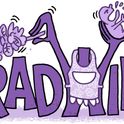The wine trade is in a quandary about its ageing drinkers. Those aged 18-34 are not buying enough. The fear is that this group will fail to develop the wine habit and the wine consumer will die out. In an attempt to ferret out why, and to understand the public's wine buying habits, market research groups have carried out a spate of surveys and research projects, some of them based on accosting buyers in supermarket wine aisles and asking them what they think they are doing.
On closer examination it seems that if there is a problem, it is with the 18-24 age group. Over the past decade, their wine consumption has fallen by 8 per cent, while that of the 25-34 age group has increased by 27 per cent. (For those aged 35-54 it has increased by 58 per cent, while the over-55s win with an increase of 67 per cent.) In short, the 50 per cent growth in wine consumption and the 60 per cent rise in sales over the past decade has passed them by. The commonsense view would seem to be that the kids will grow into it, but the fear is that they won't. Why not?
One argument goes like this. Few people are born liking wine. They need to try it, to experiment, but they are kept from this by the cost of experimentation, and the confusion born from a lack of knowledge. It is a myth that the cost of experimentation is high. For the cost of two pints of lager you can buy something quite delicious. The confusion is more of a problem. In the old world, categories of wine, and therefore their labels, are organised by geographical area (Alsace excepted); in the new world, broadly conceived, the labels more often emphasise the grape variety. Which is easier to remember-Riesling, or Erdener Treppchen Riesling Auslese 1985 Dr Loosen? Pinot Noir, or Savigny-les-Beaune? Cabernet Sauvignon, or any of a hundred French ch?teaux? This is one reason why, when this age group drinks wine, they go for new world wines labelled by the grape variety. In short, recognition is all-important-you know where you are with a chardonnay.
The old world is fighting back. Many wines from the Languedoc are labelled by grape variety-think of the dozens bottled under the category of Vin de pays d'Oc-and they are not alone. Think of the Italian wines labelled Pinot Grigio or Primativo, or the English wines labelled Bacchus. Even where the wine is not named after the grape variety, many winemakers are trying to "build a brand" by using a label which is memorable from its name or design. There is an Italian wine with a clown on the label, and Australian wines called Fat Bastard and Old Git. This worked for Australians; the hope is that it will also work for Italians and Bulgarians.
Simplifying the labels will provide help, and not just for the under-25s. But how can you target this group specifically? Market researchers have come up with the concept of "Chardonnay girl," an 18-24 working-class woman who has a "wide drinks repertoire," with wine slotted in as an early evening drink. There is also the "Adventurer," a man (or sometimes woman) from the professional and managerial classes, who does not know a lot about wine but who likes to experiment. What advertising campaign could possibly convince both? Do you make it sexy? Emphasise how easy it is to drink? Sweeten the wines and slap on cheeky labels? Associate it with sex and sand? Can the 18-24s be weaned away from beer and spirits?
There is another argument which says that winemakers should ignore this group. Wine is not particularly relevant to them, and any attempt to attract them would involve dumbing down. The problem with dumbing down is that you derange your future market. Wine is aspirational. It is not only the beverage you drink at the odd moments when you wish to feel mature; more importantly, it is the beverage you know you will want to drink when you age a bit and have dinner parties, eat out regularly, marry. If you have already learned through advertising that wine is just another 18-30, Club Med, sexy drink, then when you are older you will see it as worth less than the winemakers would like. You won't spend enough because good wine will not be important enough to you to do so. In short, ignore the younger group, because when they grow up they will drink wine anyway.
Meanwhile, if you are the "Adventurer," you may, once you become 35, evolve into the "Enthusiast," who is socially aspiring but who lacks confidence and knowledge. The "Enthusiast" buys into the traditional image of wine, which could help you, once you are 50, to turn into the "Classic connoisseur," someone who knows a lot about wine and will spend heavily on it, primarily on old world wine. "Chardonnay girl," however, is threatened with a more dire fate: she might evolve into the "Easily pleased," the working-class woman over 35 who likes inexpensive, sweeter wines and is disinclined to experiment. Evading all of the above, you might join the huge group of the "Entertainers," men and women aged 25-50 who like wine, drink it a lot, enjoy experimenting, but are careful about the price. Most people would recognise themselves here. They tend to drink the wine of the new world; but if labels were simplified, their desire to experiment might well lead them back to the old.
Matters of taste
Wine drinkers are dying out
October 19, 2003











